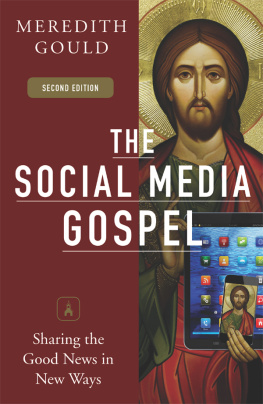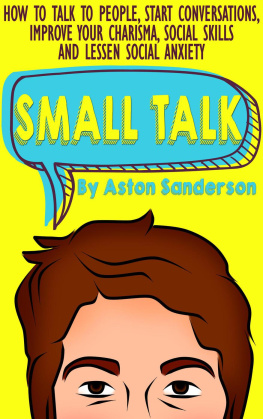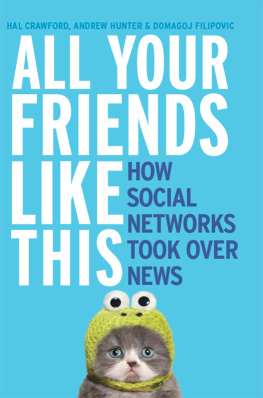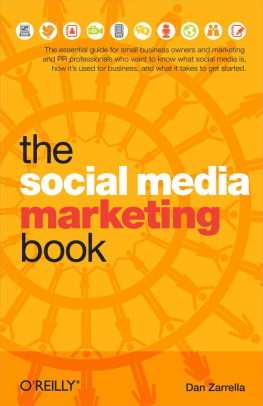Jonathan - Viralnomics: How to Get People to Want to Talk About You
Here you can read online Jonathan - Viralnomics: How to Get People to Want to Talk About You full text of the book (entire story) in english for free. Download pdf and epub, get meaning, cover and reviews about this ebook. year: 2016, genre: Home and family. Description of the work, (preface) as well as reviews are available. Best literature library LitArk.com created for fans of good reading and offers a wide selection of genres:
Romance novel
Science fiction
Adventure
Detective
Science
History
Home and family
Prose
Art
Politics
Computer
Non-fiction
Religion
Business
Children
Humor
Choose a favorite category and find really read worthwhile books. Enjoy immersion in the world of imagination, feel the emotions of the characters or learn something new for yourself, make an fascinating discovery.
- Book:Viralnomics: How to Get People to Want to Talk About You
- Author:
- Genre:
- Year:2016
- Rating:3 / 5
- Favourites:Add to favourites
- Your mark:
- 60
- 1
- 2
- 3
- 4
- 5
Viralnomics: How to Get People to Want to Talk About You: summary, description and annotation
We offer to read an annotation, description, summary or preface (depends on what the author of the book "Viralnomics: How to Get People to Want to Talk About You" wrote himself). If you haven't found the necessary information about the book — write in the comments, we will try to find it.
Jonathan: author's other books
Who wrote Viralnomics: How to Get People to Want to Talk About You? Find out the surname, the name of the author of the book and a list of all author's works by series.
Viralnomics: How to Get People to Want to Talk About You — read online for free the complete book (whole text) full work
Below is the text of the book, divided by pages. System saving the place of the last page read, allows you to conveniently read the book "Viralnomics: How to Get People to Want to Talk About You" online for free, without having to search again every time where you left off. Put a bookmark, and you can go to the page where you finished reading at any time.
Font size:
Interval:
Bookmark:
THE BEST METHODS ARE ALWAYS TIMELESS, YET TIMELY.
- @jon_ptdc

TO WHAT EXTENT ARE OUR WANTS AND DESIRES SHAPED CONTEXTUALLY BY THE LIFESTYLES OF THOSE AROUND US, RATHER THAN BY ANY ABSOLUTE NEED?
Rory Sutherland
I love this quote, but its not quite right.
Allow me to make one very minor adjustment
TO WHAT EXTENT ARE OUR WANTS AND DESIRES SHAPED CONTEXTUALLY BY THE PERCEPTION OF THE LIFESTYLES OF THOSE AROUND US, RATHER THAN BY ANY ABSOLUTE NEED?

Ahh, thats better.
Onward.
Heres to the forward-thinkers; the ones told that they cannot think for themselves. Heres to those destined for greatness, frustrated by the status quo. The ones who want to build a dream life. The ones who work to live; to love, and to smile.
Heres to those who dont just want to get by, but want to do something special with the short time that they have. The ones unwilling to trade their best years for freedom at 55.
The only people for me are the ones who are in this for the long run. They operate with integrity, passion, and with pride. They know that life is too short to spellcheck and they bring a book on the bus instead of shooting pigs with birds.
The only people for me are the ones who know that emotion trumps all else because people will forget what you did, but they will never forget how you made them feel.
Heres to those who know that focus leads to observation and observation leads to forward-thinking; that the next best thing is likely no better than that last best thing, its just different.
Buttons change, humans dont.
Heres to those not interested in learning about every new gadget, widget, or whatsinit.
Facebook, Twitter, and Pinterest might not be around in five years, but humans will be. And thats why without a keen understanding of human needs, values, and desires nothing else matters. Because the only way to do something special in this crazy world is to first move backward by studying human behavior. Only then can you innovate.
Heres to those they dont see coming.
They wrote you off as being a crazy fool but you are getting better every single day. You know that the longer it takes for you to be noticed, the better you will be. And the World needs more crazy fools like you.
This book is dedicated to my Mom and Dad, as always.
Notes to the Reader
.All stories are real, especially the stuff about me refusing to speak in Starbucks made up language just to order a coffee.
.Instead of cluttering up the text, I decided to omit references, scientific papers, and further reading sources from the published book. You can find all references and sources at: www.viralnomics.comviralnomics-references/
.I use the term the guy a number of times throughout this book - its gender neutral. I also use he and she interchangeably throughout the text.
.A few sections are similar to ones from a previous book of mine called The Race to the Top. That book is no longer in print because, well, it wasnt very good. Some sections deserved to live on and are included in some form or another here.
.Throughout this book there are jokes. Some are inside jokes between friends and others are obscure media references. If you find them, tweet me at @jon_ptdc and I might send you a prize. If you dont find them, take solace that you probably watched a lot less bad TV in the 1990s than I did.
Ill trade you a free copy of the audio version of this book for a picture of yourself holding it or an Amazon review. Go to www.viralnomics.com/free-audio to claim your copy.
Viralnomics
How to Get People to Want to Talk About You
ISBN-13:
978-1518880971
ISBN-10:
1518880975
Jonathan Goodman

Our Story Begins in the 1870s
In a time when the horse and buggy was the primary mode of transportation, a British portrait photographer had a silly idea.
Harry Pointer thought that it would be funny to dress up cats as humans and take pictures of them with phrases superimposed underneath. By 1884, Pointer had amassed over 200 different cat photographs.
Still well before the advent of the Internet a scientist put out a book that would go on to shape our view of the World. In The Selfish Gene, originally published in 1976, Richard Dawkins coined the term meme. At the time, he was describing the passing on of genetic code and how it affects our evolution. Little did he know that his term would take on a whole different meaning something that everybody from friends to Internet jokesters to marketers would try to develop.
Around 130 years after Pointers silly idea, on June 14th 2006, the domain lolcats.com was registered. The cat unforgiving, sarcastic, selfish, playful, and angry has become one of the most popular Internet memes. The images are funny and they make people smile, but so what? What can we learn from a 130+ year old story that involved a British photographer doing something funny, a scientist looking for the secrets to evolution, and some dude who struck gold by figuring out that people, for some reason, really, really, like to pass along funny pictures of cats to pass the time?
The common usage of the word meme describes an idea that spreads throughout the Internet. It can take on many different forms: it can be a picture, hashtag, video, hyperlink, or misspelled text. Memes spread virally and have been the subject of research by marketers because of their potential to create mass brand awareness.
But today I want to coin a new term a term that builds upon Dawkins original work the selfish meme. Simply put, its an Internet meme that propagates selfishly. Every person that shares it is doing so for themselves, whether they know it or not. As youll soon see, the response to perceived support from sharing these memes is physiological. When we do it we crave more, and the process spirals up. Every action that we take online is done to make us feel that we are being viewed a certain way that were part of a group; that were loved.

A share doesnt help business if nobody cares who the original creator was. Id take it one step further and argue that a share doesnt do any good for the business if the meme isnt related to the business.
Nobody cares who creates a lolcats photo. Its cute and gets passed around before finding its rightful place in the deepest depths of the Internet.
What the Mesopotamians and Lolcats Have in Common
The ancient Mesopotamians are credited as the first people to build the arch, as far back as the 2nd millennium B.C. Since then the arch is one of the predominant structures spanning almost every culture.
The arch can span a wide-open space by applying a concept called arch configuration. The shape becomes stronger with an increase in compression, and that has made it an invaluable tool for architects.
Perhaps the most important aspect of arches is that their concept can be applied to a wide variety of materials. The specifics dont matter; leave that to the engineers. The arch works.
Next pageFont size:
Interval:
Bookmark:
Similar books «Viralnomics: How to Get People to Want to Talk About You»
Look at similar books to Viralnomics: How to Get People to Want to Talk About You. We have selected literature similar in name and meaning in the hope of providing readers with more options to find new, interesting, not yet read works.
Discussion, reviews of the book Viralnomics: How to Get People to Want to Talk About You and just readers' own opinions. Leave your comments, write what you think about the work, its meaning or the main characters. Specify what exactly you liked and what you didn't like, and why you think so.











![switching.social [switching.social] - The Switching Social Handbook](/uploads/posts/book/131346/thumbs/switching-social-switching-social-the-switching.jpg)

